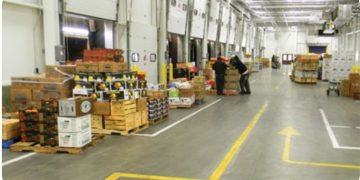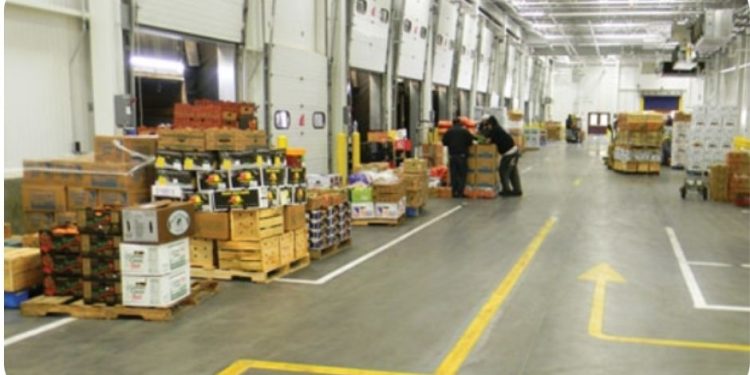It’s important for the produce industry to remain attractive to trucking.
Without truckers, the produce industry would be, well, sunk.
 “About 1 to 2 percent of produce goes on rail,” said Kenny Lund, vice president of support operations for the Allen Lund Company in La Canada, Calif. “There are people who think that should be 50 percent.
“About 1 to 2 percent of produce goes on rail,” said Kenny Lund, vice president of support operations for the Allen Lund Company in La Canada, Calif. “There are people who think that should be 50 percent.
“If we could get it to 3 to 4 percent, that would help.”
But even if rail transport could be increased a little, a whole lot of produce would still need to be moved over the road.
That’s why the North American Produce Transportation Working Group (NAPTWG) released a set
of best practices to guide shippers, receivers and carriers earlier this year. The practices were also the topic of a session at the recent United Fresh 2012 trade show.
Shrinking pool
The NAPTWG is composed of produce transportation stakeholders from associations and industry groups across North America. The initiative to develop best practices was motivated by a need to protect the industry’s access to trucking.
“Looking at the capacity going forward and the carriers available to haul produce, it’s shrinking,” Lund said.
The economy, regulations, lack of capital and an aging workforce and fleet have all contributed to
the reduction, Lund said. Truckers are also going to be facing a cutback in the hours they can work in one day — from 11 to 10. And electronic on-board recorders are soon going to be required in place of written log books.
In California, new, more stringent regulations governing refrigerated trucks could result in some carriers simply refusing to move produce there, Lund said.
But there’s another big reason for falling numbers of truckers.
“Drivers get out of it because of poor treatment, more than any other reason — and that’s by everybody: law enforcement, people on the docks,” he said. “And at the same time, it’s actually easier to drive. The equipment is dramatically better.”
And then there are the unique challenges of moving produce.
“You’ve got to know what you’re doing to haul strawberries,” Lund said. “It’s different than hauling cotton or dry goods.”
Working as a team The industry has pretty much been self regulating. Lund said that while he expects the Food Safety Modernization Act to address issues relating to temperature monitoring and trailer cleanliness, how to handle disputes and who’s responsible for what when a load is declined or goes bad continue to fall to the industry itself.
The industry has pretty much been self regulating. Lund said that while he expects the Food Safety Modernization Act to address issues relating to temperature monitoring and trailer cleanliness, how to handle disputes and who’s responsible for what when a load is declined or goes bad continue to fall to the industry itself.
“Heretofore, there have been a lot of best practices about how to ship produce, how to store produce, how to receive it,” said Doug Stoiber, a vice president for L&M Transportation Services in Raleigh, N.C., and a part of NAPTWG. “This document shows more about how the shipper and the trucker work together, and the trucker and receiver work together.
“The produce industry realized with transportation capacity becoming ever more important and ever more scarce, it’s important that produce be
viewed as a desired load and that produce buyers become desired destinations.”
It used to be, Stoiber said, that “David had to fight Goliath” anytime anything went wrong.
“It’s saying that the partners who give the loads to the transportation companies, and those who accept the loads from the transportation companies, have a responsibility to protect the carriers themselves,” Stoiber said.
The best practices also pinpoint issues relating to food safety.
“The best practices is addressing and is going to continue to address the need for carriers’ involvement for maintaining an absolutely safe supply chain for produce from the field to the consumers’ fork,” Stoiber said.































